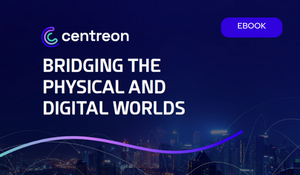
Observability
Or more importantly: enabling business observability
Observability is an evolution of IT Monitoring where DevOps, PlatformOps and BusinessOps share the same data, KPIs or dashboards.
USER CONTEXT & CHALLENGES
Transforming IT Monitoring Into Observability
The Covid-19 pandemic has accelerated the digital transformation of the overall economy, from small to large enterprise and from private to public sectors: Digital business is now a synonym for business. This in turn accelerated another transformation: the transformation of IT operations from a collection of siloed infrastructure-focused teams to a global team of service-oriented specialists, all collaborating to deliver performance to the end user.
In this new world order, DevOps combine the development of innovative software and its daily operations, PlatformOps simultaneously deliver, maintain, and scale self-service platforms shared by all, while BusinessOps–does this exist yet?–imagine, implement, and benchmark the new user experiences that ensure competitiveness and profitability.
These trends are shaping the future of IT operations, where observability becomes an extension of IT Monitoring. Gartner defines observability as “the evolution of monitoring into a process that offers insight into digital business applications, speeds innovation and enhances customer experience.”
What organizations really need in the long run is business observability. An evolution of IT monitoring that starts at the top, looking at the most essential business processes; That lets DevOps, PlatformOps and BusinessOps all be aware of the infrastructure each business service depends on, and how the performance of one impacts the other; That allows them to design, deliver and maintain the digital experiences that make the business competitive. An evolution where IT operations share the data, the KPIs, and the views beyond the field of IT Monitoring.
We believe that enabling business observability makes it more relevant than ever to build a strong, comprehensive, and business-centered IT operations environment. And that the Centreon platform is your perfect starting point to do so.
WHAT WE DO
Business Performance Is What Really Matters
What is the Centreon platform monitoring exactly? Digital systems or a digital business?
The answer is both. IT operations teams evolved from managing IT systems to helping manage a digital business. They need to keep their eyes on both dimensions simultaneously: IT and business.
Centreon monitors the IT.
Monitoring the IT infrastructure is where it all starts. The world runs on IT: no IT means no business.
Centreon monitors each and every piece of IT that is involved in delivering business processes. And that means a lot of different and diverse elements! Centreon monitors the IT assets that reside in the public cloud, whether it be SaaS applications or Amazon AWS, Microsoft Azure, or Google Compute IaaS platforms. Centreon monitors on-premise legacy equipment that still run decade-old applications, alongside private cloud microservices clusters that support newly developed business applications. Centreon monitors equipment at the edge of the network, where business transactions take place and connected devices, WiFi, SD-WAN, and edge computing all participate in creating innovative, competitive user experiences.
We call this cloud-to-edge monitoring.
Centreon monitors the business.
Business performance is what really matters. This transformation is about shifting strategy upside-down from business process down to data sources. It is about sharing customer value metrics and not just reliability metrics.
Centreon monitors the end-to-end business processes themselves, not just the IT infrastructure they are relying upon. Is the IT service being delivered from the cloud all the way to the edge, where employees, customers, suppliers all interact together to create business value? What is the end-to-end performance of each service? Centreon tells IT operations teams whether they meet the service level agreements they contract with their internal or external customers. It shows them where performance is impacted and how it is impacted. Centreon automatically creates views, reports, and dashboards to understand how digital outcomes translate into business outcomes–and shares this information with all stakeholders.
We call this business-aware monitoring.
Centreon fits into the observability stack.
Making your business observable at the IT operations level means you are aware of the infrastructure each business service depends on, and you are ready to collect all types of data that may ultimately be useful to making sense of your business performance.
There is more than just IT infrastructure monitoring data to collect. Application Performance Monitoring (APM), that deep dives into the software architecture to trace internal transactions, also provides useful insights for a selected number of critical applications. Digital Experience Monitoring (DEM), that measures from their own perspective how employees and customers experience IT services and applications, is another key source of information. And when it comes to troubleshoot complex, erratic behaviors, machine logs or network packet performance data always come handy. Centreon tightly interacts with all the above to create a seamless, comprehensive observability stack that can be used by PlatformOps, DevOps and BusinessOps indifferently to design and deliver business performance.
We call the sum of all this enabling business observability.
HOW WE DO IT
5 Steps to Build Your Own Business Observability Stack
Each IT operations organization is unique, each business environment has its own innovation and performance challenges, each IT infrastructure combines its own mix of legacy and cutting-edge technologies. Investing in a Centreon platform and following these five steps provide a path to successfully building your own business observability stack.
1.
Leverage automation to build monitoring right into your IT platform
PlatformOps teams maintain dynamic IT platforms that evolve, scale, and adapt to the exact requirements of fast-paced DevOps projects. Only IT automation can cope with this infrastructure high frequency change rate. It applies to monitoring this infrastructure, too: only automation can ensure 100% monitoring coverage, whatever the rate of daily changes. Centreon cloud-to-edge monitoring implements a unique combination of Auto-Discovery Engine, API-centric processes, and built-in configuration templates covering 500+ types of IT assets to build monitoring right into your IT platform.
2.
Implement Service Mapping for all business-critical services
Observability is not so much about collecting data than it is about making sense of the data. Making your business observable at the ITOps level means you are aware of the infrastructure each business service depends on. Centreon monitors IT services as a composite by grouping all the underlying infrastructure components, identifying their logical relationship and mapping dependencies to identify causality. This not only facilitates root-cause analysis, it also automatically keeps track of service level agreements and reports on IT services MTTR or MTBF.
3.
Involve all stakeholders by sharing relevant views
Understanding how digital outcomes translate into business outcomes is what business observability is all about. Showing on the same picture both the IT side and the business side of performance. Correlating reliability metrics with customer value metrics. Centreon extensive top-down views are designed to share the complete IT performance picture with both IT operations teams and business owners. Let them easily navigate between the Cockpit views, Custom Dashboards, Graphical views, Geo views, and Analytical Reports, all designed to give each one the tools and level of details they need, fostering collaboration around a single source of truth.
4.
Integrate Centreon at the heart of your IT operations stack
IT Monitoring is one of many platforms you need when it comes to operating a large, complex IT infrastructure that supports all your critical business workflows. The secret is to harness IT monitoring data to contribute to making the overall digital landscape more observable. Centreon Stream Connectors send qualified metrics and events to your Splunk, Elastic or any data repository of choice to build a much wider, more ambitious observability stack. We combine this with seamless integration with all the best-of-breed ITSM and ChatOps tools to empower IT operations teams who need maximum efficiency and productivity.
5.
Create a feedback loop for continuous business insights
Integration is a bidirectional process. Platforms such as APM, DEM or NPMD monitoring solutions can contribute valuable information to help perform a better business-aware, cloud-to-edge infrastructure monitoring. As well as many other data sources, Centreon collects data from adjacent monitoring tools, business insights from databases, middleware and business applications, correlated information from data repositories at the heart of the observability stack, in order to add contextual information to top-down views–and in turn let all stakeholders take better informed decisions.
At Centreon, we trust that investing in our platform and following these five steps will put you in a good position to jump over your next hurdle: evolve from a culture of technical siloes to a culture of business observability.
3 KEY BENEFITS
Why Consider Centreon for Enabling Business Observability?

Monitor business processes, from cloud-to-edge.

Share business monitoring insights with all stakeholders.

Set up the cornerstone of your next observability stack.
Ready to see how Centreon can transform your business?
Keep informed on our latest news





